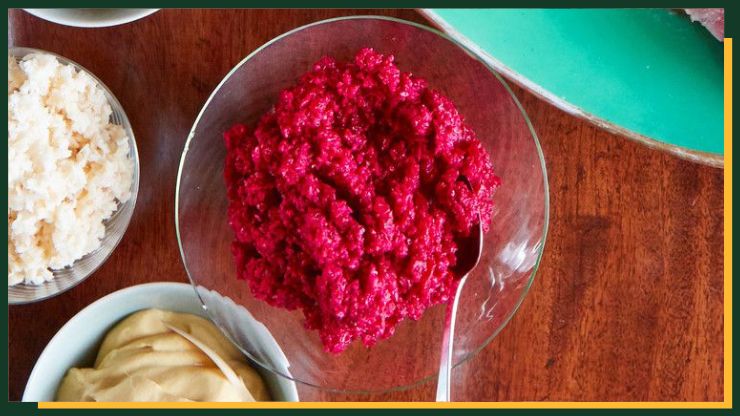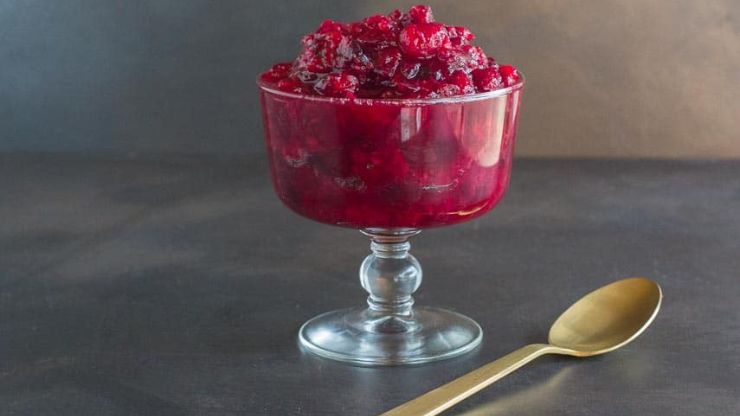Probiotic Red Horseradish Sauce – Unlock a burst of flavor and health benefits with our Probiotic Red Horseradish Sauce. This zesty condiment not only tantalizes your taste buds but also incorporates the goodness of probiotics for digestive well-being.
Harnessing the pungency of fresh red horseradish, the mild creaminess of Greek yogurt, and the vibrant notes of red bell pepper and garlic, this sauce is a delightful addition to any dish. Packed with probiotic richness, it’s a simple way to elevate your meals while supporting gut health.
Whether paired with grilled meats, sandwiches, or fish, this versatile sauce adds a tangy kick to your culinary repertoire. Join us on a journey of flavor and nutrition with this Probiotic Red Horseradish Sauce – where taste meets wellness in every spoonful.
Table of Contents
ToggleImportance of incorporating probiotics into the diet
Incorporating probiotics into the diet is essential for various reasons, as these beneficial microorganisms offer a range of health benefits. Here are some key reasons highlighting the importance of including probiotics in your diet:
- Gut Health: Probiotics play a crucial role in maintaining a healthy balance of microorganisms in the digestive system. They help promote the growth of beneficial bacteria in the gut, which is essential for proper digestion and nutrient absorption.
- Immune System Support: A significant portion of the immune system resides in the gut. Probiotics contribute to the overall health of the immune system by supporting the balance of bacteria in the digestive tract. This can potentially help in preventing and managing various infections.
- Digestive Disorders: Probiotics have been shown to be beneficial in managing certain digestive disorders such as irritable bowel syndrome (IBS), inflammatory bowel diseases (IBD), and diarrhea. They can help alleviate symptoms and contribute to overall gut well-being.
- Balancing the Microbiome: The microbiome is the diverse community of microorganisms living in and on the body. Probiotics contribute to maintaining a balanced and diverse microbiome, which is associated with better overall health.
- Nutrient Absorption: A healthy gut flora enhances the absorption of essential nutrients from the food we consume. Probiotics can aid in breaking down and assimilating nutrients, promoting better overall nutritional status.
- Mental Health: There is growing evidence of the gut-brain connection, suggesting that the health of the gut can influence mental well-being. Probiotics may play a role in supporting mental health by modulating the gut-brain axis.
- Antibiotic-Associated Issues: Antibiotics, while important for treating bacterial infections, can also disrupt the natural balance of gut bacteria. Probiotics can help restore this balance, reducing the risk of antibiotic-associated issues like diarrhea.
- Lactose Digestion: Certain probiotics, especially those in fermented dairy products, can aid in the digestion of lactose, making them beneficial for individuals who are lactose intolerant.
Also, Read – How to Make Lebna
Don't just scroll, subscribe!
BuzzTrail's unique web-stories are the cure for boredom you've been waiting for.
Ingredients
Main Ingredients:
- 1 cup fresh red horseradish, peeled and grated
- 1 cup Greek yogurt (or probiotic-rich dairy or non-dairy alternative)
- 1/2 cup red bell pepper, seeds removed and finely chopped
- 2-3 garlic cloves, peeled and crushed
Additional Flavor Enhancers:
- 1 tablespoon Dijon mustard
- 2 tablespoons lemon juice (adjust to taste)
- Salt and pepper to taste
Equipment
To prepare Probiotic Red Horseradish Sauce, you’ll need the following equipment:
- Food Processor: For grating the red horseradish, chopping the red bell pepper, and blending the ingredients into a smooth consistency.
- Mixing Bowl: To combine and mix the grated horseradish, chopped red bell pepper, crushed garlic, and other ingredients.
- Storage Container: An airtight container for storing the finished sauce, especially if you choose to ferment it for added probiotic benefits.
- Grater: For finely grating the fresh red horseradish.
- Knife and Cutting Board: To chop the red bell pepper and prepare other ingredients.
- Citrus Juicer: If using fresh lemons for lemon juice, a juicer can make the process easier.
- Measuring Spoons and Cups: For accurate measurement of ingredients.
- Sterilized Container (Optional): If you decide to ferment the sauce, you’ll need a sterilized container for this step.
Also, Read – How to Make Probiotic Creme Fraiche
How To Make Probiotic Red Horseradish Sauce

- Prepare Ingredients:
- Peel and grate the fresh red horseradish using a grater.
- Chop the red bell pepper, ensuring the seeds are removed.
- Peel and crush the garlic cloves.
- Combine Main Ingredients:
- In a mixing bowl, combine the grated horseradish, chopped red bell pepper, and crushed garlic.
- Add Greek Yogurt:
- Add 1 cup of Greek yogurt (or your chosen probiotic-rich alternative) to the bowl.
- Incorporate Additional Flavor:
- Mix in Dijon mustard, lemon juice, salt, and pepper to taste.
- Adjust lemon juice and seasoning based on your preferences.
- Food Processor Blend:
- Transfer the mixture to a food processor.
- Blend until the ingredients are well combined and the sauce reaches your desired consistency.
- Adjust Consistency:
- If the sauce is too thick, you can add a little more yogurt or a splash of water to reach the desired thickness.
- Optional Fermentation (For Probiotic Boost):
- Transfer the sauce to a sterilized container if you choose to ferment it.
- Allow it to ferment at room temperature for 24-48 hours, depending on taste preference.
- Final Adjustments:
- Taste the sauce and adjust the seasoning, consistency, or probiotic intensity as needed.
- Storage:
- If not fermenting, transfer the Probiotic Red Horseradish Sauce to a clean, airtight container.
- Refrigerate for freshness and longer shelf life.
- Serving:
- Serve the sauce chilled.
- Pair with grilled meats, sandwiches, fish, or any dish of your choice.
- Enjoy!
- Revel in the tangy and probiotic-rich goodness of your homemade Probiotic Red Horseradish Sauce.
Conclusion
In conclusion, integrating probiotics into your diet is a pivotal step toward fostering optimal health. From supporting digestive well-being and fortifying the immune system to potentially influencing mental health, these beneficial microorganisms offer a myriad of advantages. As guardians of gut balance, probiotics contribute to overall wellness, making them a valuable addition to a wholesome and balanced lifestyle. Embrace the benefits of probiotics to nurture a thriving internal ecosystem and enhance your overall health and vitality.
FAQs
Where can I find probiotics in my diet?
Where can I find probiotics in my diet?
Probiotics are present in fermented foods like yogurt, kefir, sauerkraut, kimchi, and kombucha. Probiotic supplements are also available.
How do probiotics benefit gut health?
How do probiotics benefit gut health?
Probiotics help maintain a balance of microorganisms in the gut, supporting digestion, nutrient absorption, and overall gastrointestinal health.
Can probiotics improve the immune system?
Can probiotics improve the immune system?
Yes, probiotics contribute to immune system health by promoting a balanced gut microbiota, which is crucial for immune function.

